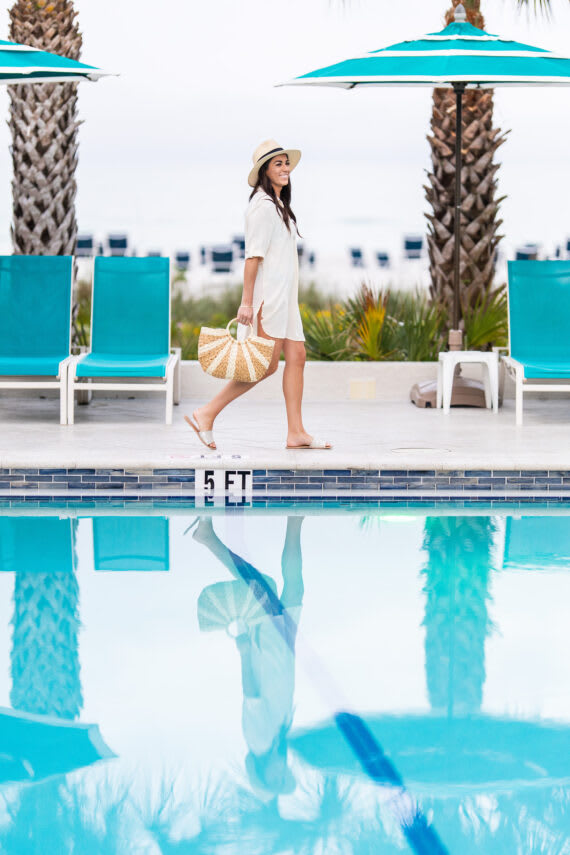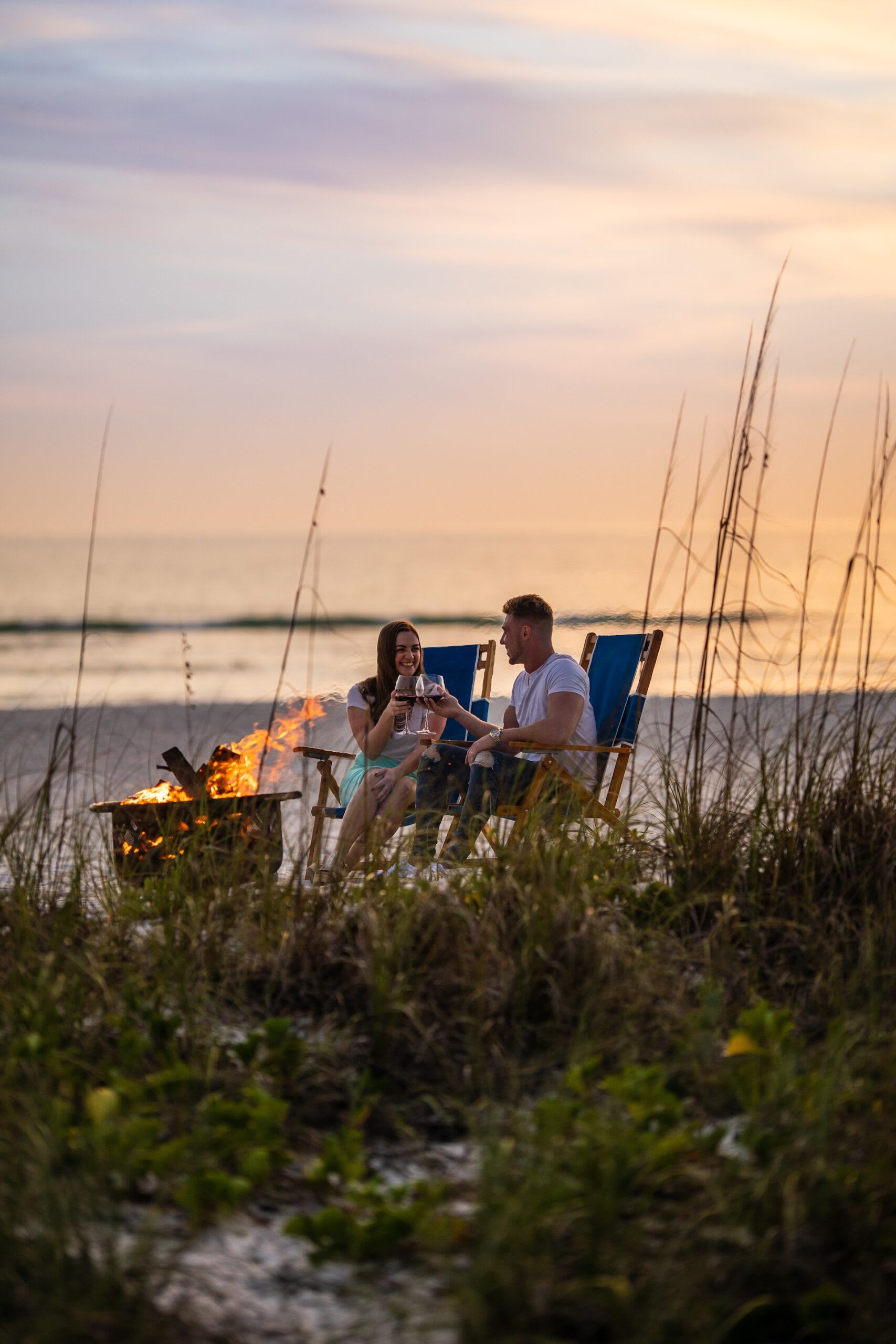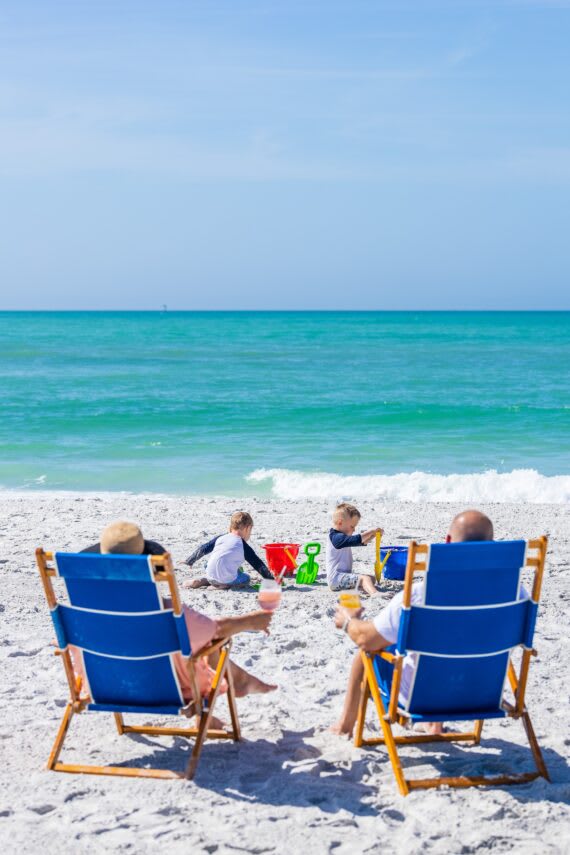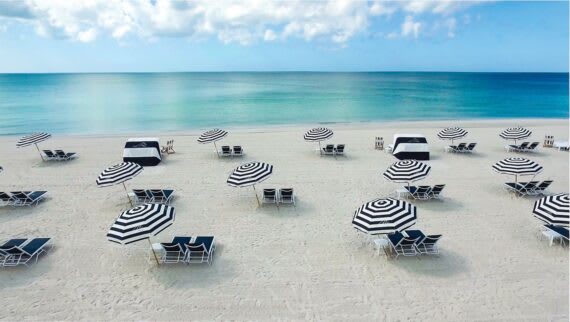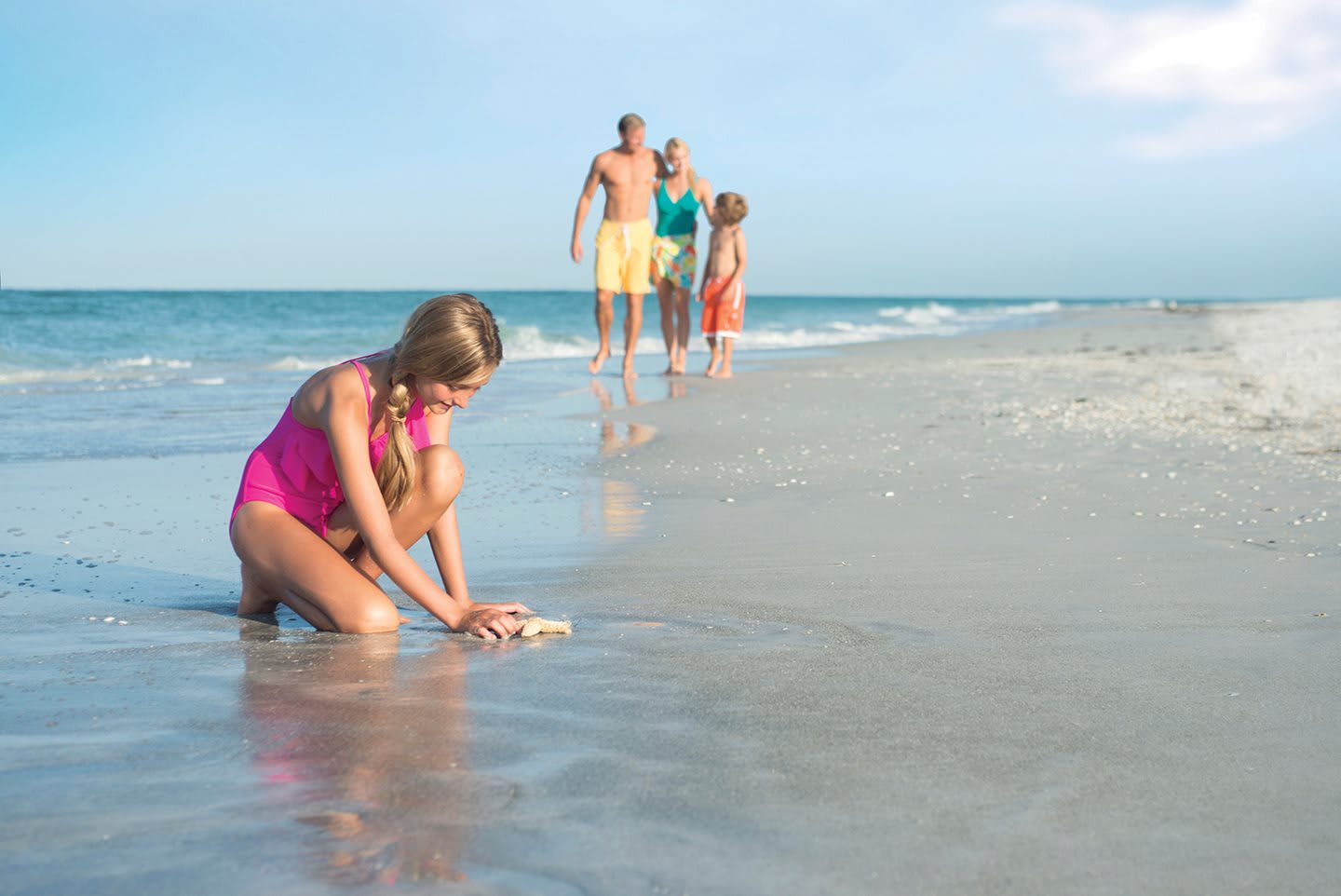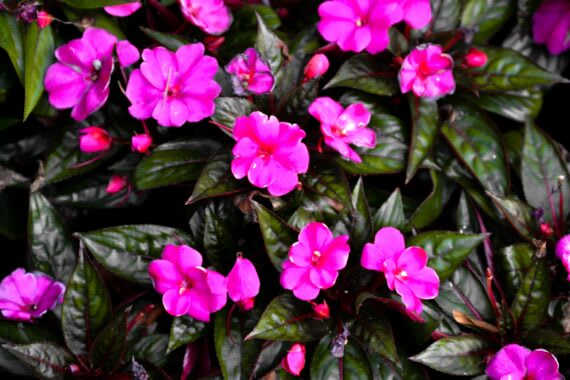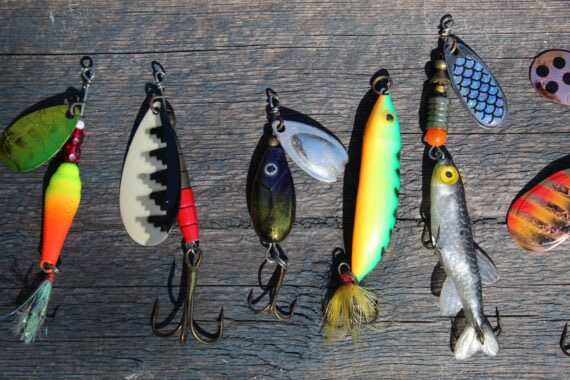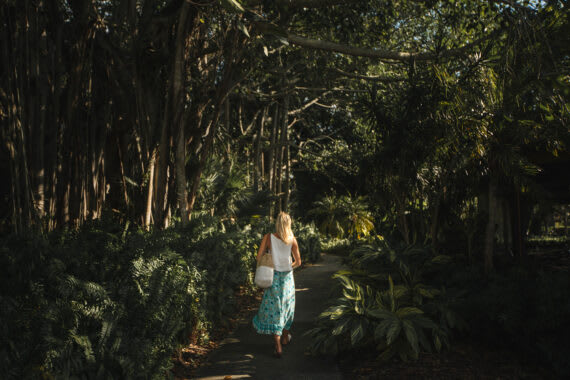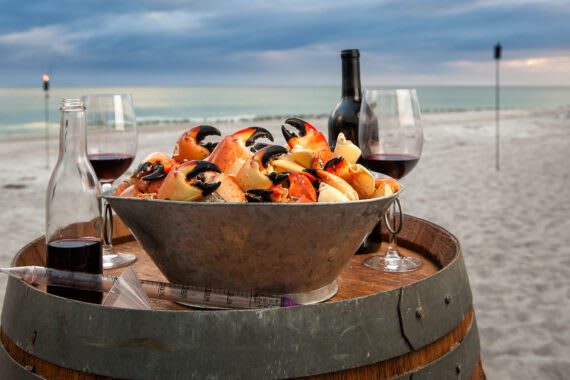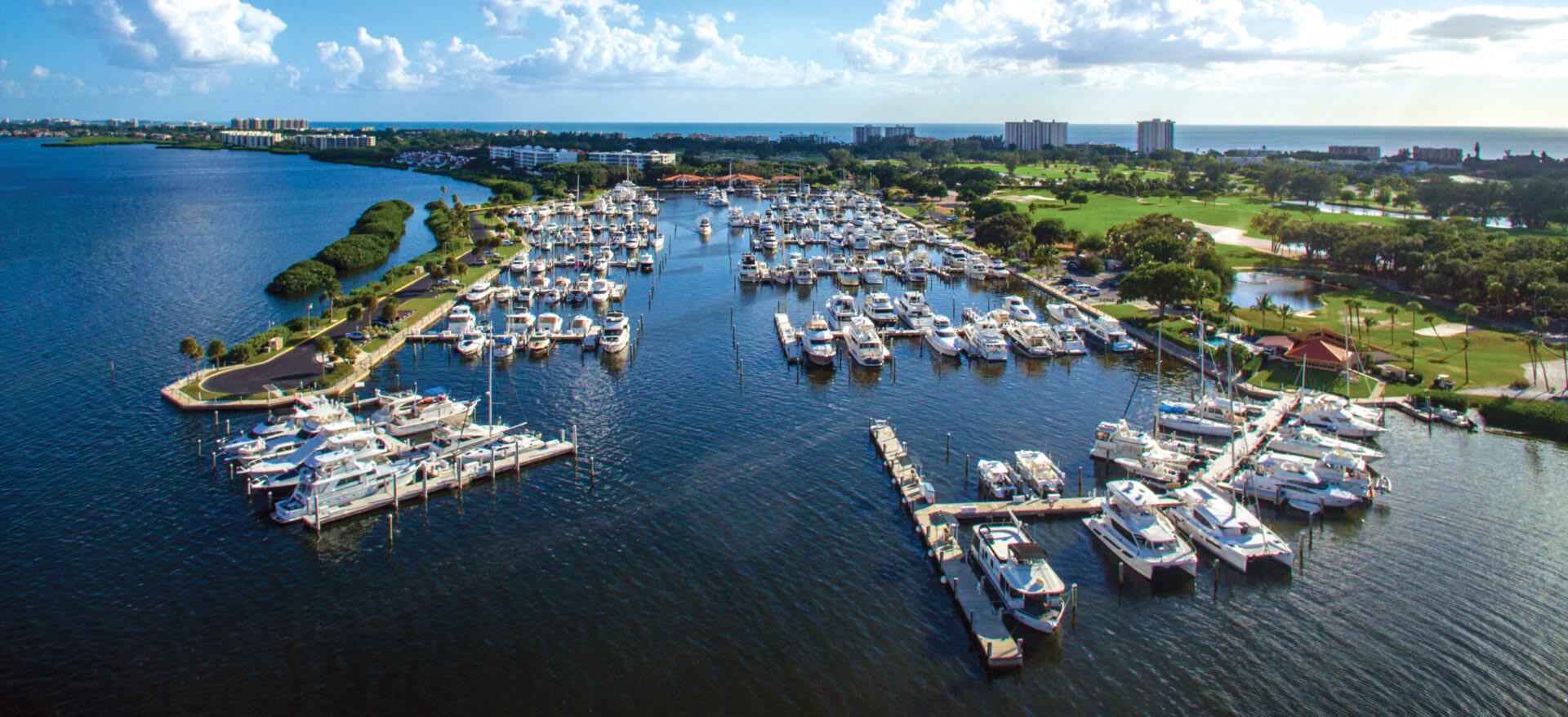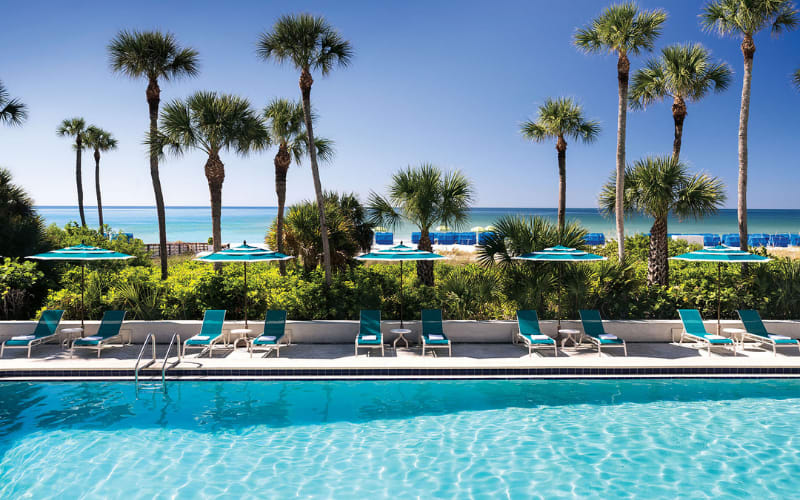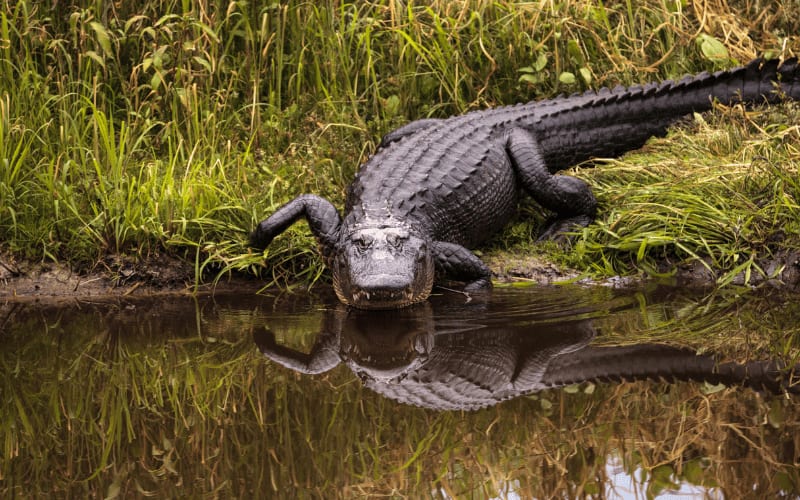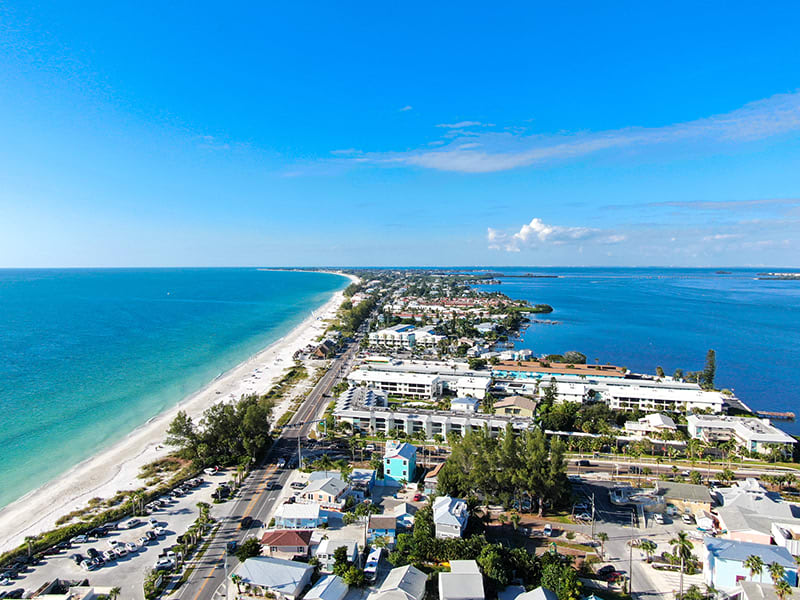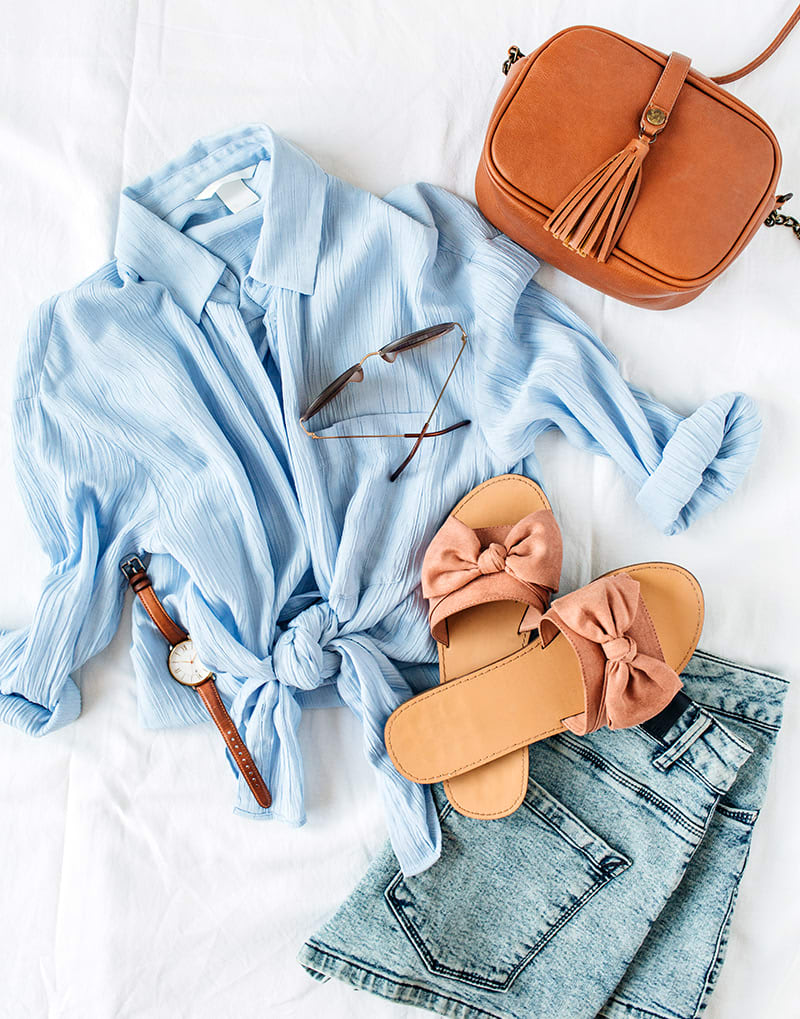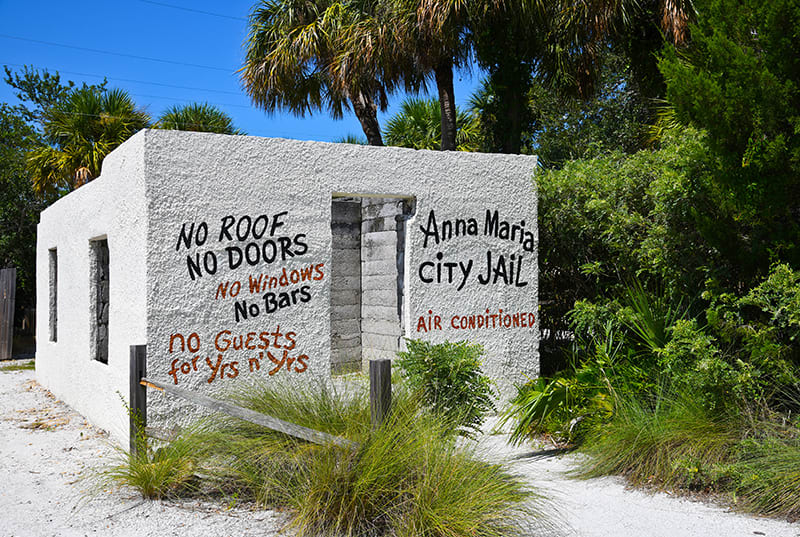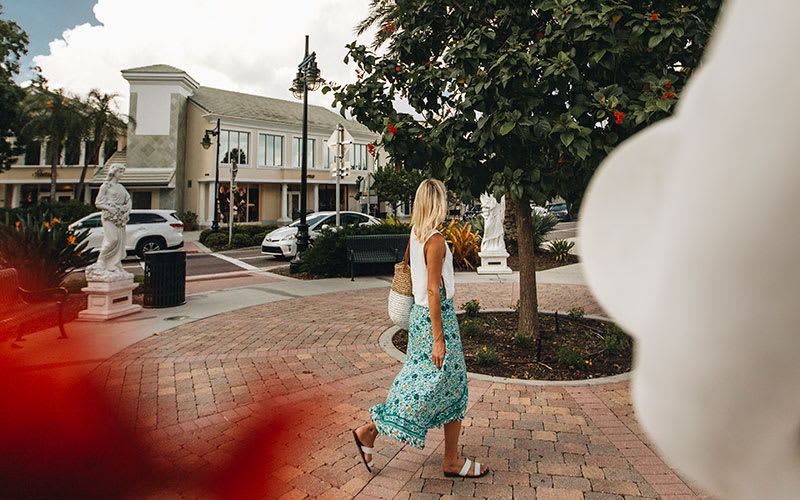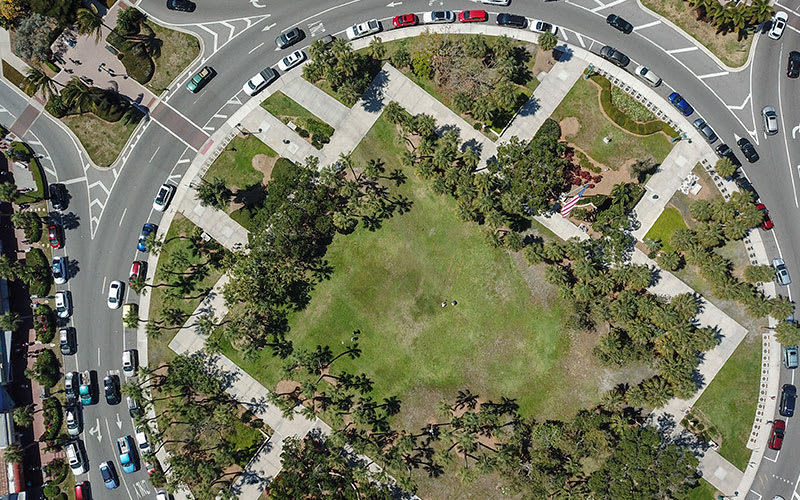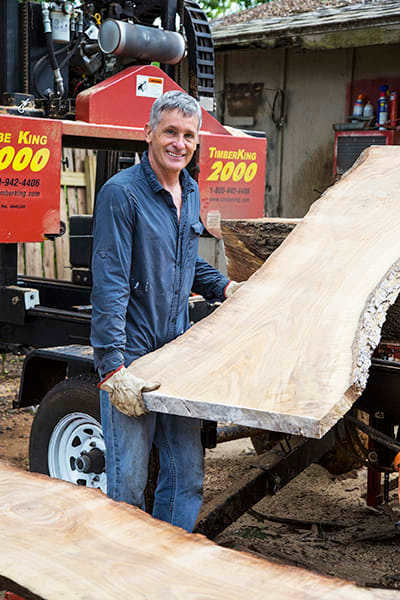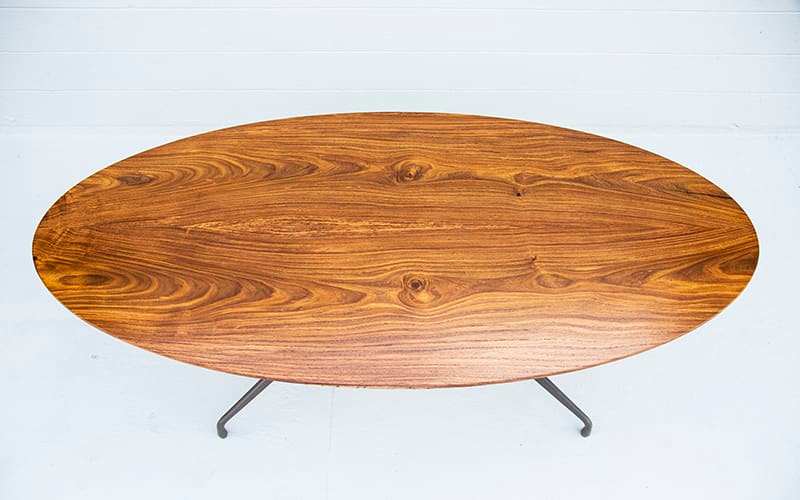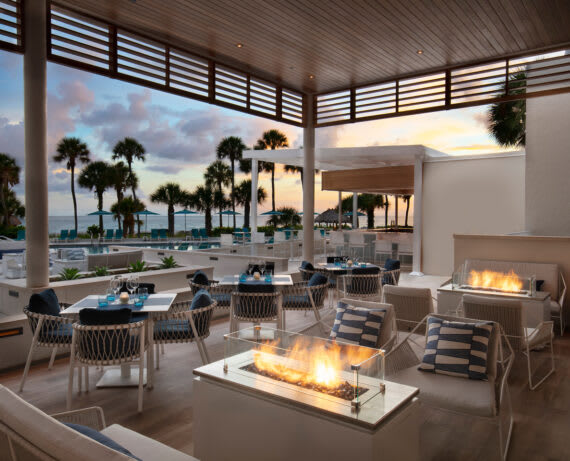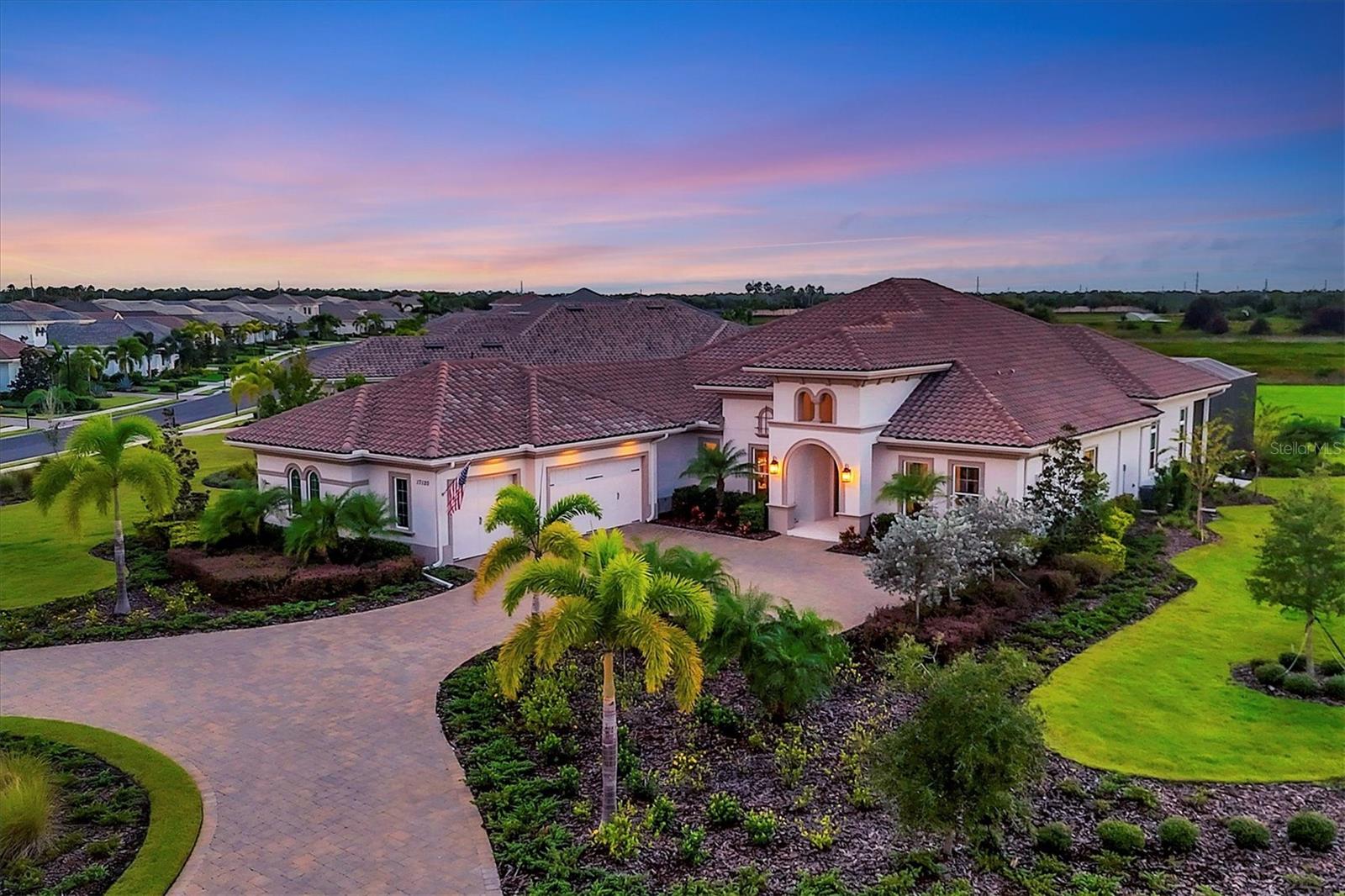Above © The League Collective, @leaguetravels
More than just a paradise for gourmets and shopaholics, St. Armands Key – and its respective popular tourist spot of St. Armands Circle – is home to some interesting history.
Home to more than 140 upscale boutiques, award-winning restaurants, posh art galleries, and more in an open-air European-inspired setting,
St. Armands Circle is said to be the jewel of Sarasota. But there’s more to this barrier island destination – which sits adjacent to Lido Key and is connected to the mainland by the John Ringling Causeway – than just a sophisticated outdoor dining and shopping experience. Its rich history tells a story of presidential ties, elephants as building aids, and an intentionally circular layout inspired by that of a circus wagon wheel.
1. Its Name Should Really Be St. Amand Circle
The island is named for Frenchman Charles St. Amand, a homesteader who purchased roughly 132 acres of land on the island in 1893 (for the sum of $21.71!), becoming its first resident. However, his name was misspelled as “Armands” on the deed, thus St. Armands Circle was born.
2. The Shape and Layout Were Inspired by the Circus
Circus magnate John Ringling – whose honorary museum,
The John and Mable Ringling Museum of Art, is located just six miles away in northern Sarasota – purchased the island in 1923 with a vision for a spoked wheel–shaped shopping and recreation district and an upscale residential enclave consisting of homes of Mediterranean and Spanish architecture.
3. Elephants Built the Circle’s Adjoining Causeway
Well, not by themselves, that is. Ringling used his paddle-wheeled steamer, Success, to ferry workers back and forth to the island, but circus elephants were recruited for hauling the timbers used to construct the causeway and bridge.
4. It Has Presidential Ties
At the heart of St. Armands Circle, Ringling developed a community of residences around a circular park, which he named in memory of his friend, Warren G. Harding – the 29th president of the United States.
5. It’s on the National Register of Historic Places
The aforementioned park is now known as the
Harding Circle Historic District, which celebrates its 95th anniversary in 2021, and was designated a national historic place for its unique community development and planning in 2001.
6. Sculpture Was a Key Part of Ringling’s Vision from the Beginning
John Ringling was a voracious collector of art. He indulged his passion on annual scouting trips to Europe for the circus, collecting works from the Old Masters including Rubens and van Dyck. Today, more than 30 sculptures grace the streets of St. Armands Circle – one-third of which belonged to Ringling himself.
7. It Nearly Fell Victim to the Stock Market Crash of 1929
In fact, the circle’s commercial and retail district sat virtually empty until the 1940s and ’50s, when shops and restaurants finally started filling up storefronts. Today, the district fulfills Ringling’s dream of being a premier tourist destination, drawing visitors from all over the world.
8. It Has Its Very Own Version of the Hollywood Walk of Fame
Winter home of the Ringling Bros. and Barnum Bailey Circus, Sarasota honors its ties to the circus with
The Circus Ring of Fame that lives in St. Armands. With a roster of more than 140 inductees from around the world, the award celebrates the highest of achievement in the circus arts, and each inductee is honored with a bronze wagon-wheel and biographical plaque inlaid in the circle’s central park.
Inside Sarasota’s Wood Street Studio
Across the country, more and more woodworkers are jumping on the urban lumber bandwagon by breathing new life into old wood destined for the dump. But only in Sarasota will you find an abundance of rare tree species and a man, named Dale Reike, who transforms it into stunning pieces that tell a unique story about this southwestern spot on the gulf.
While Rieke looks every bit the quintessential 50-something surfer, with his salt-and-pepper hair, facial scruff, slouchy gray T-shirt, and camo-print shorts, his number-one passion is actually working with his hands. Specifically, he’s been designing and building furniture for the last 30 years – first under the company known as Dale Rieke, Inc., but now rebranded as
Wood Street Studio, the fabrication studio about a mile from downtown on the edge of the city’s up-and-coming Rosemary District. And with the change in name also came an evolved business approach, when, roughly six years ago, he began embracing his local roots in his design – quite literally – by venturing into the world of urban lumber.
Across the country, urban lumber is on-trend, where woodworkers are taking salvaged, recycled, or reclaimed wood, rather than uniform lumber purchased from typical suppliers to create one-of-a-kind custom tables, chairs, bar tops, mantels, bed frames, and more. But being “on-trend” isn’t what ushered Rieke into using this unique kind of wood. Sarasota did. In more ways than one.
Dale Reike at Wood Street Studio
Saving Downed Wood Destined for the Dump
“There’s some heavy building going on right now in Sarasota, which means a lot of trees coming down and a wealth of wood that is destined for the dump,” says Rieke. “The thing that really motivated me was when I’d see really beautiful trees come down, I would feel this anguish. And I’d wonder to myself ‘what could I have made out of that?’” That’s when he says “the insanity” started. After offering to take wood off contractors’ or arborists’ hands, people started automatically approaching him, tipping him off to potential trees because of building projects, storms, or damage by insects. “Every time I have a job and I know that he can use the wood, I call him,” says Mauricio Calles, owner of P&C Expert Tree Service.
It’s really a win-win situation: It saves on labor for the arborists (who usually have to mulch as much of the tree as they can) as well as landfill fees (landfills charge somewhere around $37 per ton and a tree trunk alone can weigh eight or nine tons), Rieke gets some beautiful wood, and it’s downright better for the environment.
Unique Wood Species You’ll Only Find in Sarasota
Invasive species also play a role. In particular, Australian pines are a non-native species in Sarasota that are considered a nuisance because they have shallow root systems that make them easy to topple, and they encourage beach erosion – particularly on the barrier islands of Longboat Key and North and South Lido. As a result, the county has to remove them. “But the wood is amazing. It’s so heavy and dense, and not prone to rotting. It’s become this amazing resource for me that, for years, I never knew existed.”
And that’s just the tip of the iceberg when it comes to the kind of resources Sarasota offers up. Yes, this geographical area of Florida is farther south than most other places in the continental United States, which means that instead of just your usual walnut, maple, and cherry trees, Rieke gets access to specimens like guanacaste, 700 (!) different species of eucalyptus, and kapok trees that thrive in this more tropical climate. But even more so, the climate zone is even different from that of Central Florida – even that of northern Tampa. Sarasota is home to what’s known as a subtropical climate and Central Florida is a temperate zone, which means Sarasota doesn’t get much of a consistent freeze, which leads to wood that doesn’t typically grow in the immediate surrounding regions, like rosewood, golden camphor, and red camphor.
“I’ve been in this business my whole life, and I had no idea the epic trees that are here in Sarasota,” he says. “Sometimes, arborists drop off these trees that are extremely unique and we’re not even sure what they are. And because of that subtropical climate, these trees are anything but uniform – there’s more tension on them, so they’re smaller, with more curves.”
Wood Street Studio's Unique Urban Lumber Style
Rieke’s design style naturally fits well in Sarasota, home to a collection of midcentury-modern residences and buildings designed by big names like Ralph Twitchell, Paul Rudolph, Victor Lundy, and other members of the Sarasota School of Architecture. While the wood offers an undeniable wild touch to everything, the overarching aesthetic of his final pieces feel very clean-lined, Danish, and minimal. He also – with the help of his wife, who he says is a bit of a “mid-century fanatic” – finds old mid-century furniture at auctions, estate sales, and flea markets and refurbishes them using his wood. “We’ve found at least 20 or 30 Herman Miller tables, so we’ll fix the bases, then use our urban lumber on top,” says Rieke. Take, for example, a 1950s Charles Eames tulip table with an oval chrome base that he refurbished then replaced the top with a beautiful piece of rosewood.
“It was a fitting choice because Eames used a lot of rosewood veneer during that era,” he says. “Now, not only is it an interesting architectural design that pays tribute to Sarasota’s past, but it also has a one-of-a-kind unique piece of wood on there. It’s a table that tells a story.”
Host your next meeting or event at the Resort at Longboat Key Club
Events to remember begin at the Resort at Longboat Key Club. With 12,000 square feet of sophisticated event space, we’re ready to host your next conference, meeting, special event, or the wedding of a lifetime. Our expansive indoor and outdoor spaces include ballrooms, boardrooms, the beach, and the largest resort marina on the Gulf Coast.

